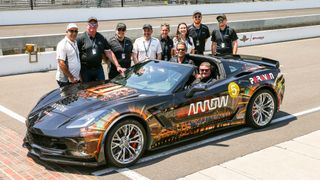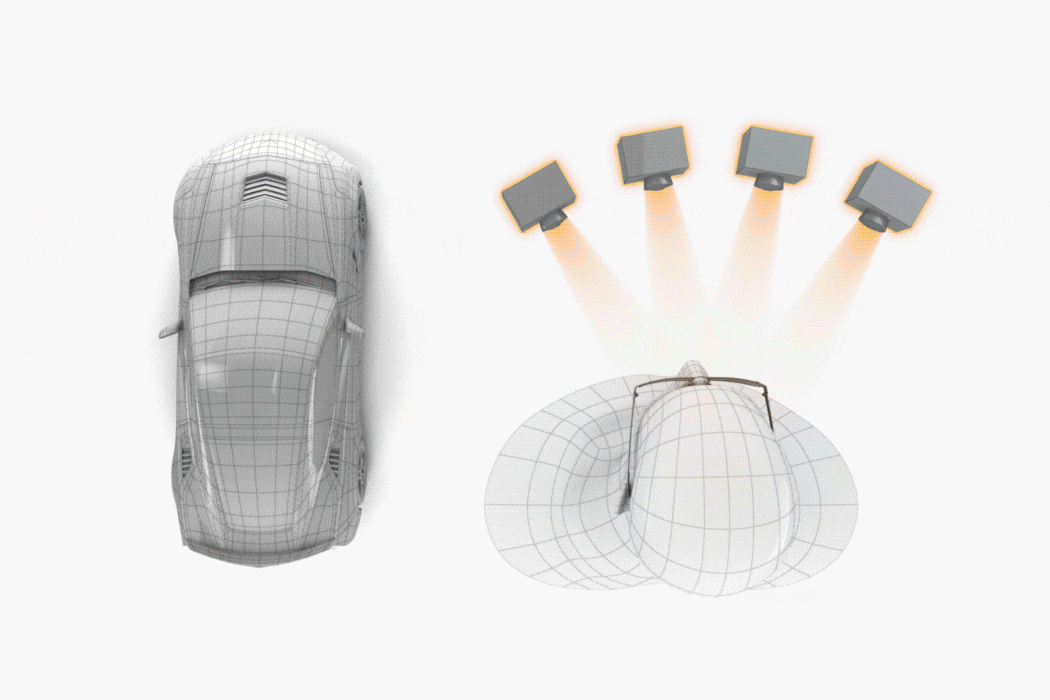
Race car drivers are a peculiar bunch. It’s fair to say that aggressively cornering at three-figure speeds is not most people’s idea of a good time, especially when the stakes involved can so quickly shift from winning and losing to a toss-up between life and death.
It’s a testament to the passion associated with motorsport, though, that even those who fall victim to the immense risks involved are often reluctant to walk away from the track – and no one better illustrates that sentiment than Sam Schmidt.
A former driver in America's IndyCar motor racing series, Schmidt suffered a severe spinal cord injury during a practice lap at Florida’s Walt Disney World Speedway in 2000. He was diagnosed as a quadriplegic, and given just a few years to live. No longer able to drive a race car, Schmidt founded Schmidt Peterson Motorsport – now known as Arrow McLaren SP – which has since become the most successful team in the history of the Indy Lights series, the highest tier of IndyCar other than the premier IndyCar Series itself.
But as you might expect from a man accustomed to the driving seat, watching from the paddock wasn’t enough. In 2013, Schmidt partnered with a team of engineers to get back behind the wheel. Together, he and American tech company Arrow Electronics developed the SAM Car, a semi-autonomous Chevrolet Corvette Stingray that's controlled, incredibly, using only head movements, voice commands and breath. In the years since, Schmidt has driven the car in amateur races, broken speed records, and cruised down public streets in several US cities – all despite being paralyzed from the chest down.

TechRadar had the opportunity to speak with Schmidt at the UK's Goodwood Festival of Speed, where we discussed his incredible journey, the future of assistive technologies and how he hopes his story inspires disabled individuals all around the world.
“For me, it wasn’t baseball, basketball or football; it was racing every weekend,” Schmidt says, as he reflects on his decision to pursue a career in motorsports. “My dad raced, and you're poured into it when your parents are into it, so my [racing] life started when I was five.”
He wasn’t half bad, either. Schmidt made 27 career starts as an IndyCar driver, racing three consecutive years at the Indianapolis 500 and winning at the Las Vegas Motor Speedway in 1999. “My career got really good,” he admits. “In ’99 we were competing for a lot of wins, everything was pretty rosy.”
Get the best Black Friday deals direct to your inbox, plus news, reviews, and more.
Sign up to be the first to know about unmissable Black Friday deals on top tech, plus get all your favorite TechRadar content.
Then, in January 2000, Schmidt careered into the wall of the then-famous Walt Disney World Speedway at 200mph. “I blew apart my C3 and C4 vertebrae. They told my wife, ‘if he makes it this week, he has two to five years to live’ – that was 21 years ago.”
The journey that followed – from life-saving ventilator to 500-horsepower race car – was a predictably long road of rehabilitation, adaptation and mental fortitude, but it was Arrow Electronics that would provide Schmidt with a decidedly unexpected route back into racing.
“There's a lot of serendipitous events throughout this whole story,” he says. “Here's this 80-year-old tech company nobody's ever heard of that wants to build a car for someone who can't use their arms or legs. So, they did it, and nicknamed it the Semi-Autonomous Mobility project – or SAM car – before they ever knew about me.” Schmidt quietly chuckles at this.
“I’d done some work with a hospital in Denver, and Arrow happened to call them and ask if they had any patients who might want to drive again – and they said, ‘yeah, we know a former race car driver.’ So, we were introduced, and I agreed on one condition: we have to go 100mph. And the rest is history.”

At the most basic level – if a system of this complexity might ever be described as ‘basic’ – the SAM Car works via three main inputs: steering, throttle and brake. To steer, Schmidt wears sunglasses or a safety helmet studded with reflective sensors which interact with four infrared cameras mounted to the windshield. These cameras direct infrared beams toward his head, which reflect off the sensors and return to the camera, allowing the car’s computer to calculate the angle of reflection – directional information which is then sent to the wheels. Essentially, then, Schmidt steers the car by turning his head. The system is so responsive that he can drive on almost any street or race track configuration, including 180-degree hairpin turns.

Throttle and brake functions are a little simpler. Sam keeps a tube in his mouth connected to a pressure sensor. He blows air into the tube to accelerate, and sucks on the tube to brake. To maintain a steady speed, Sam blows a desired amount of air into the tube and bites down to seal that pressure inside. So far, Arrow says, he’s maxxed out at 201mph – faster than the take-off speed of most commercial airliners.

At present, Sam needs a co-driver both for race track driving and street driving (because he’s steering with his head, he must look where he’s aiming the car). The co-driver therefore helps by looking ahead and calling out the next turn, advising him when to brake and when to accelerate. But as for the driving, it’s all Sam.
"They told my wife, ‘if he makes it this week, he has two to five years to live’ – that was 21 years ago.”
The car itself is also relatively inconspicuous. Save for the company-branded decal plastered across the doors and bonnet, you’d never know this was a Corvette Stingray modified to accommodate a quadriplegic driver. And that, ultimately, encapsulates the essence of this project. Yes, Sam is a racing driver hell bent on burning rubber, but he and his car represent just one way in which technology can help disabled individuals pursue their passions and regain independence.

“At first,” Sam says, “I did this selfishly because I wanted to drive again. But as it's evolved, and there’s been so many people motivated to do more things with their life, for me the main goal now is to send a message. I wouldn't wish a disability on anybody, but you can still do things in your life, you can still be productive, you can still have kids, you can still have a family – you’ve just got to put your mind to it.”
The conversation then shifts away from the race track to the practical applications of this sort of technology. “I'd like to see it used in industry to put people back to work,” he says. “You know, why not? Why not a harvester? Why not a train? There's so many people with disabilities out there that want to go back to work. They’ve still got their brains. Wi-Fi can enable somebody to use this technology from their business office or living room. I could drive this car completely remotely, so others could do the same in a domestic setting, for different applications.”
"I wouldn't wish a disability on anybody, but you can still do things in your life, you can still be productive, you can still have kids, you can still have a family – you’ve just got to put your mind to it.”
On the subject of Wi-Fi, Sam is keen to emphasize that even simple technologies like smart home devices have proven immeasurably beneficial to individuals in his position. “I mean, it’s amazing to see what the likes of Siri and Alexa can do for disabled people in an everyday environment. For somebody like me, who can’t do anything for himself, just the ability to command things can be life changing.”
Sam has also been the beneficiary of another mobility-extending Arrow project, the SAM Suit 1.0 – a semi-autonomous exoskeleton allowing him to stand and walk again for short periods. Although in its early stages, the suit represents a further avenue through which assistive technologies can change the lives of those without control of their limbs. Sam’s gratitude for the momentary mobility it granted him is clear to see. “They designed a custom exoskeleton for me to dance with my daughter at her wedding – which was by far the best day I’ve had in 21 years.”

Of course, the widespread development, domestication and distribution of products like the SAM Car and exo-suit remains, unsurprisingly, some years away. Like most forward-facing innovations, cost lies at the heart of their life and death. But that doesn’t take away from the fact that these projects give immense promise to the future of assistive technologies.
On that front, Sam and Arrow Electronics are optimistic. The latter continues to develop practical solutions for improving mobility and accessibility, with several other projects already under its belt (and more under wraps) that prove technology’s capacity to change lives.
For Sam, a dream he once thought impossible to realise is now his reality – and he only wants to go faster. “Obviously, I want to add some performance things to the car so we can be more competitive,” he says, “but the sky's the limit. Maybe we’ll go to the moon?”
Sam Schmidt: racing driver, activist... astronaut? Talk about ambition.

Axel is TechRadar's UK-based Phones Editor, reporting on everything from the latest Apple developments to newest AI breakthroughs as part of the site's Mobile Computing vertical. Having previously written for publications including Esquire and FourFourTwo, Axel is well-versed in the applications of technology beyond the desktop, and his coverage extends from general reporting and analysis to in-depth interviews and opinion. Axel studied for a degree in English Literature at the University of Warwick before joining TechRadar in 2020, where he then earned an NCTJ qualification as part of the company’s inaugural digital training scheme.